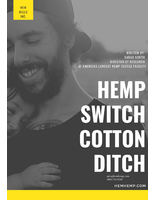Scientific American surveys global bio-based innovation.
Share:
Press Release Summary:
Working with BIO, Scientific American has completed a survey and analysis of worldwide progress in the field of biotechnology and uncovered the innovation capacities of various countries. "Scientific American Worldview: A Global Biotechnology Perspective" aimed to discover what was happening concerning biotech activity, funding, and policy initiatives as based on facts and not biases from any particular country, region, or industry perspective.
Original Press Release:
Scientific American Worldview Surveys Bio-Innovation Across the Globe
Atlanta, Ga. May 18, 2009 -- Scientific American, the world's most authoritative consumer science magazine, has completed a first-of-its-kind survey of biotech's worldwide progress, uncovering the "innovation capacities" of a wide range of countries, big and small.
In cooperation with the Biotechnology Industry Organization, Scientific American released the results of this comprehensive survey and analysis, entitled Scientific American Worldview: A Global Biotechnology Perspective, at the 2009 BIO International Convention in Atlanta. The report can be accessed at www.saworldview.com.
"We wanted to find out what was really happening on the ground when it came to biotech activity, funding and policy initiatives." said Jeremy Abbate, the publication's director and head of global media for Scientific American. "Our objective was to dig deeper than the typical 'marketing messages' surrounding innovation. What we found is that there is no "one-size-fits all" approach to building a promising life science sector, and a lot of smaller countries-where you would not expect a lot of activity-are really punching above their weight."
The report surveys regions of the world where there is enormous bioscience potential, such as Brazil, China, India, Singapore, Denmark and Israel. That potential (what the report deems a country's "innovation score") was determined through a systematic analysis of a number of variables and data sets.
"What's often missing in our discussions about the advancement of biotechnology are numbers that we can trust and an analysis that takes into account every layer of the biotech enterprise," said Jim Greenwood, president and CEO of BIO. "This report will help guide our conversations as we look to grow the biotech sector worldwide."
While the United States retains its preeminent position in the biotechnology sector overall in terms of innovation capacity, it didn't top every category scored. In fact, to make useful comparisons, the magazine's editors ensured that the data metrics addressed the wide differences in sizes of populations and economies among nations.
For example, Israel topped the category for foundations support, i.e. how much business and government expenditures are earmarked annually for biotech infrastructure development. "Examining the data revealed a lot of interesting stories," notes Yali Friedman, the lead editorial consultant for the project, and author of the book, Building Biotechnology. "Israel has the greatest business expenditures on R&D as a proportion of GDP than any other country. Other interesting cases include Singapore, which has the most post-secondary science graduates per capita, followed by Ireland and Australia"
And in 2008, Iceland was near the top of the category described as "biotech intensity," a measure of the amount of commercial biotech activity. "Iceland has the greatest overall intensity", notes Friedman, "it has the most public companies per capita (followed by Denmark) and the most public company employees per capita (followed by Ireland).
For Scientific American Worldview editors, the opportunity to work with BIO, the respected expert in the field with access to the world's leading biotech companies, proved beneficial. "We wanted to work with BIO because it has a very interested and international audience," said Abbate. "They wanted to work with us to have a third-party publisher with a reputation for editorial excellence. I think this project underscores BIO's commitment to quality, unbiased information and being seen as a valuable information clearinghouse for its members."
Greenwood says "Scientific American's approach to the project guaranteed an independent and meticulously researched report-one based on the facts and not on biases from a particular country, region or industry perspective".
"We wanted the information in the report to reflect the reality of what's happening in each individual country," said Greenwood. "Independence was prized because so much is at stake in the evolution of the biotech enterprise."
About Scientific American
Scientific American is the oldest continuously published magazine in the U.S. It has been bringing its global readers unique insights about developments in science, medicine and technology for more than 164 years.
About BIO
BIO represents more than 1,200 biotechnology companies, academic institutions, state biotechnology centers and related organizations across the United States and in more than 30 other nations. BIO members are involved in the research and development of innovative healthcare, agricultural, industrial and environmental biotechnology products. BIO also produces the BIO International Convention, the world's largest gathering of the biotechnology industry, along with industry-leading investor and partnering meetings held around the world.



